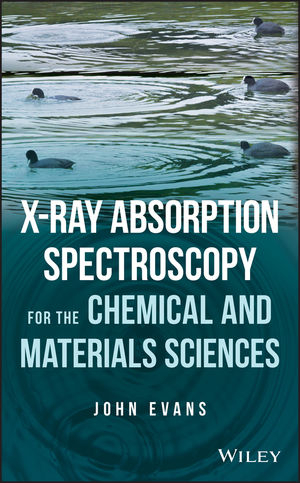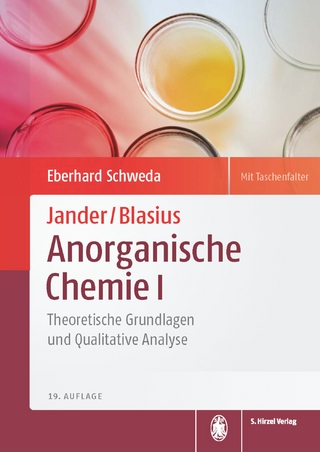
X–ray Absorption Spectroscopy for the Chemical and Materials Sciences
John Wiley & Sons Inc (Verlag)
978-1-119-99091-8 (ISBN)
- Titel ist leider vergriffen;
keine Neuauflage - Artikel merken
This book is a practical guide to help investigators choose the right experiment, carry it out properly and analyse the data to give the best reliable result. It book gives readers insights to extract what they need from the world of large scale experimental facilities like synchrotrons. Key features: * A no-nonsense introduction to the technique and applications of x-ray absorption spectroscopy * XAFS is now an everyday tool for the structural analysis of material science, biology and catalysts * Features Questions and Answers to support the student s learning through the book * Relevant to all working on synchrotron sources and applications in physics, materials, environment/geology, and biomedical materials * Four-colour representation to allow easy interpretation of images and data for the reader
JOHN EVANS, PHD, is currently Emeritus Professor in Inorganic Chemistry at the University of Southampton and a visiting scientist at the Diamond Light Source. Previously, he was Science Program Advisor at Diamond. He was awarded the Royal Society of Chemistry Tilden Medal in 1994 and the Royal Society of Chemistry Meldola Medal in 1978.
About the Author ix
Preface xi
Acknowledgments xiii
Glossary and Abbreviations xv
1 Introduction to X]Ray Absorption Fine Structure (XAFS) 1
1.1 Materials: Texture and Order 1
1.2 Absorption and Emission of X]Rays 2
1.3 XANES and EXAFS 2
1.4 Information
Content 3
1.5 Using X]Ray Sources as They Were 4
1.6 Using Light Sources Now and To Be 5
1.7 Questions 7
References 8
2 Basis of XAFS 9
2.1 Interactions of X]Rays With Matter 9
2.1.1 Absorption Coefficients 9
2.1.2 Absorption Edges 10
2.1.3 XANES and EXAFS 12
2.1.3.1 XANES Features 13
2.1.3.2 Edge Position 16
2.1.3.3 The EXAFS Effect 19
2.1.3.4 EXAFS Quantification 21
2.2 Secondary Emissions 24
2.2.1 X]Ray Fluorescence 26
2.2.2 Electron Emission 28
2.2.3 Resonant Inelastic X]Ray Scattering or Spectroscopy (RIXS) 29
2.3 Effects of Polarization 30
2.3.1 Plane (Linear) Polarization 30
2.3.2 Circular Polarization 30
2.3.3 Magnetic Dichroism 30
2.4 Questions 31
References 32
3 X]Ray Sources and Beamlines 33
3.1 Storage Rings 33
3.1.1 Second] and Third]Generation Sources 33
3.1.2 Bending Magnet Radiation 34
3.1.3 Insertion Devices 38
3.1.3.1 Wavelength Shifters and Multipole Wigglers 38
3.1.3.2 Planar Undulators 38
3.1.3.3 Helical Undulators 41
3.1.4 Time Structure 41
3.2 Other Sources 43
3.2.1 Laboratory Sources 43
3.2.2 Plasma Sources 44
3.2.3 High Harmonic Generation 44
3.2.4 Free Electron Lasers (FELs) 44
3.3 Beamline Architecture 45
3.3.1 Mirrors 48
3.3.2 Monochromators 49
3.3.3 Near]Sample Focusing Elements 55
3.3.3.1 Kirkpatrick]Baez (KB) Mirrors 55
3.3.3.2 X]Ray Lenses 56
3.3.3.3 Zone Plates 56
3.4 Effect of Photon Energy on Experiment Design 57
3.5 Questions 58
References 59
4 Experimental Methods 61
4.1 Sample Characteristics 62
4.1.1 X]Ray Absorption of Samples 62
4.1.2 Classes of Experimental Layouts 63
4.2 Scanning Modes 64
4.2.1 Scanning XAFS 64
4.2.2 Energy Dispersive XAFS 66
4.3 Detection Methods 67
4.3.1 Transmission 67
4.3.2 Electron Yield 74
4.3.3 Fluorescence 76
4.3.3.1 Total Fluorescence Yield 79
4.3.3.2 High]Resolution Fluorescence Detection (HERFD) and X]Ray Emission Spectroscopy (XES) 86
4.3.3.3 Resonant Inelastic X]Ray Scattering or Spectroscopy (RIXS) 90
4.3.3.4 Inelastic X]Ray Raman Scattering (XRS) or Nonresonant Inelastic X]Ray Scattering (NIXS) 91
4.3.4 X]Ray Excited Optical Luminescence (XEOL) 94
4.4 Spatial Resolution 95
4.4.1 Methods of Studying Textured Materials 95
4.4.2 Full]Field Transmission X]Ray Microscopy (TXM) 96
4.4.3 X]Ray Photoelectron Emission Microscopy (X]PEEM) 99
4.4.4 Focused]Beam Microscopies 100
4.4.4.1 Scanning Micro] and Nano]Focus Microscopy 100
4.4.4.2 Scanning (Transmission) X]Ray Microscopy (STXM) 102
4.5 Combining Techniques 103
4.5.1 Two]Color XAFS 103
4.5.2 X]Ray Scattering 104
4.6 X]Ray Free Electron Lasers (XFELs) 106
4.6.1 Laser]Pump Measurements 107
4.6.2 Sampling Environments 108
4.6.3 X]Ray Beam Intensity 109
4.6.4 XAS and XES 109
4.7 Questions 110
References 111
5 Data Analysis and Simulation Methods 117
5.1 Background Subtraction 119
5.1.1 Experimental Considerations 119
5.1.2 Background Subtraction Procedures 121
5.2 Compositional Analysis 123
5.2.1 Single Energy Comparisons 123
5.2.2 Least Squares Analysis 124
5.2.3 Principal Component Analysis 126
5.2.4 Mapping Procedures 129
5.3 Structural Analysis 130
5.3.1 EXAFS Analysis 130
5.3.1.1 Distance Measurement 132
5.3.1.2 Angle Estimation 133
5.3.1.3 Coordination Number Estimation 138
5.3.1.4 Speciation of Back]Scattering Elements 140
5.3.1.5 Goodness of Fit 143
5.3.2 XANES Simulations 145
5.3.2.1 K Edge XANES 145
5.3.2.2 L Edge XANES 146
5.3.3 XES and RIXS Simulations 150
5.4 Present To Future Opportunities 153
5.5 Questions 154
References 155
6 Case Studies 163
6.1 Chemical Processing 164
6.1.1 Liquid Phase Reactions 164
6.1.1.1 Steady State or Slow Reactions (Minutes]Hours) 165
6.1.1.2 Fast Reactions (Ms to Minutes) 166
6.1.1.3 Very Fast Reactions (~100 ps – ms) 173
6.1.1.4 Ultrafast Reactions (fs – ps) 177
6.1.2 Reactions of Solid]State Materials 178
6.1.2.1 Steady]State or Slow Reactions (Minutes]Hours) 179
6.1.2.2 Fast Reactions (Ms to Minutes) 181
6.2 Functional Materials 184
6.3 Imaging on Natural, Environmental, and Heritage Materials 186
6.4 Questions 191
References 193
Index 197
| Verlagsort | New York |
|---|---|
| Sprache | englisch |
| Maße | 181 x 245 mm |
| Gewicht | 498 g |
| Themenwelt | Naturwissenschaften ► Chemie ► Analytische Chemie |
| Naturwissenschaften ► Physik / Astronomie | |
| Technik ► Maschinenbau | |
| ISBN-10 | 1-119-99091-2 / 1119990912 |
| ISBN-13 | 978-1-119-99091-8 / 9781119990918 |
| Zustand | Neuware |
| Haben Sie eine Frage zum Produkt? |
aus dem Bereich


